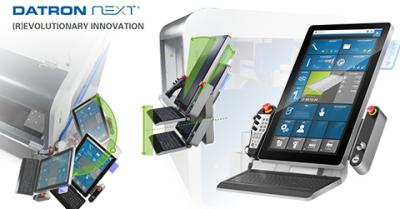
"Make a complex process simple and intuitive." This was the goal for the specialists at DATRON AG intent on developing an innovative control called "DATRON next." The result is a control system with surface optics that compare to the newest smartphone technology--clearly laid out tiled optics, self-explanatory icons with intuitive control logic, clearly illustrated tools in 3D optics. Simply swiping the colored touchscreen activates an integrated camera within seconds.
This camera and a 3D probe help to significantly reduce workpiece setup times and operator error. The software runs in the background, processing a comprehensive technology of the highest level. Even true milling beginners find their way quickly and achieve the best results with DATRON next, according to the company.
The CAM Assistant is an example of the ease-of-use of the control. In just two steps, it guides the operator through the program and tool management. All tools are presented with information on type, dimensions and location. The right tool is selected in seconds. The workpiece is set up just as quickly.
"We have greatly accelerated and simplified this previously time-consuming process with the aid of a camera and a 3D probe," explains Gregor Leinfelder, director of product management at DATRON AG.
This creates one of the most important prerequisites for reliable, accurate processing results. As a last step, DATRON next also allows the 3D simulation of the workpiece before being milled. Here, the revolutionary control system provides an ideal preview of the result even before the milling begins.
Contact Details
Related Glossary Terms
- computer-aided manufacturing ( CAM)
computer-aided manufacturing ( CAM)
Use of computers to control machining and manufacturing processes.
- gang cutting ( milling)
gang cutting ( milling)
Machining with several cutters mounted on a single arbor, generally for simultaneous cutting.
- milling
milling
Machining operation in which metal or other material is removed by applying power to a rotating cutter. In vertical milling, the cutting tool is mounted vertically on the spindle. In horizontal milling, the cutting tool is mounted horizontally, either directly on the spindle or on an arbor. Horizontal milling is further broken down into conventional milling, where the cutter rotates opposite the direction of feed, or “up” into the workpiece; and climb milling, where the cutter rotates in the direction of feed, or “down” into the workpiece. Milling operations include plane or surface milling, endmilling, facemilling, angle milling, form milling and profiling.
